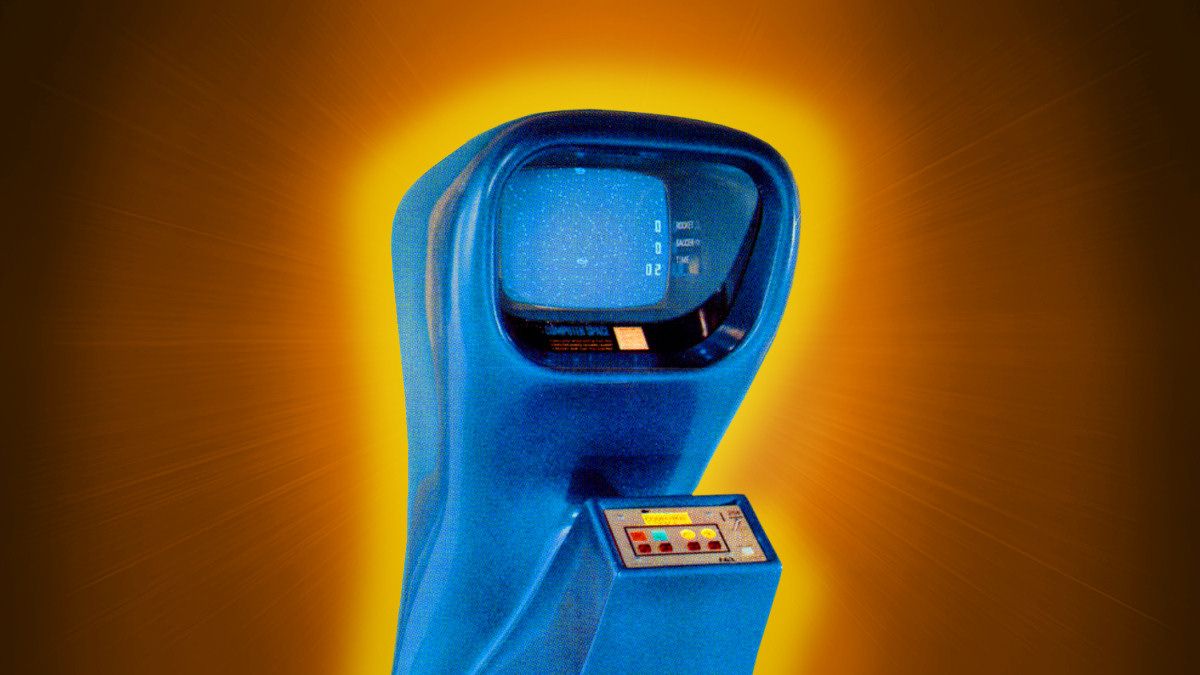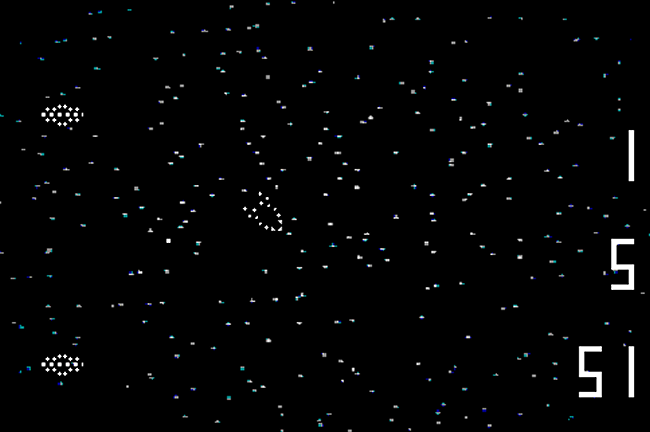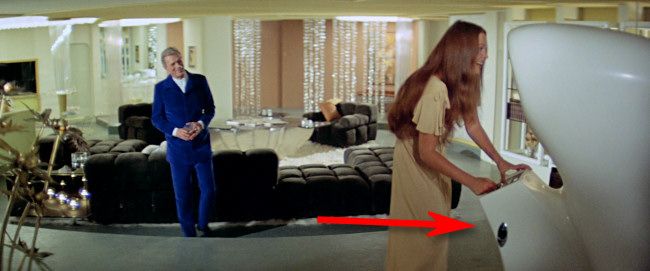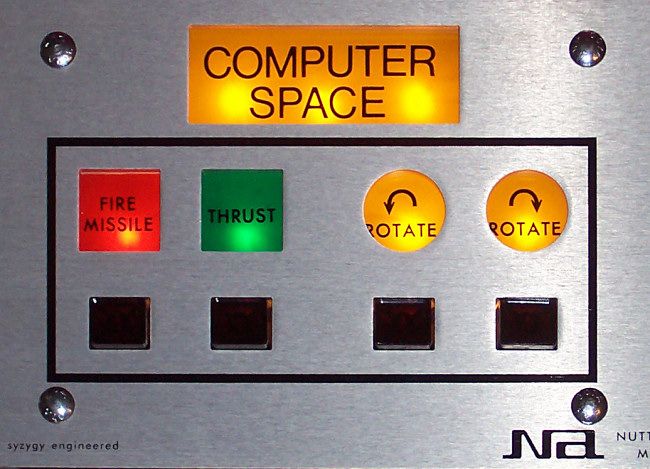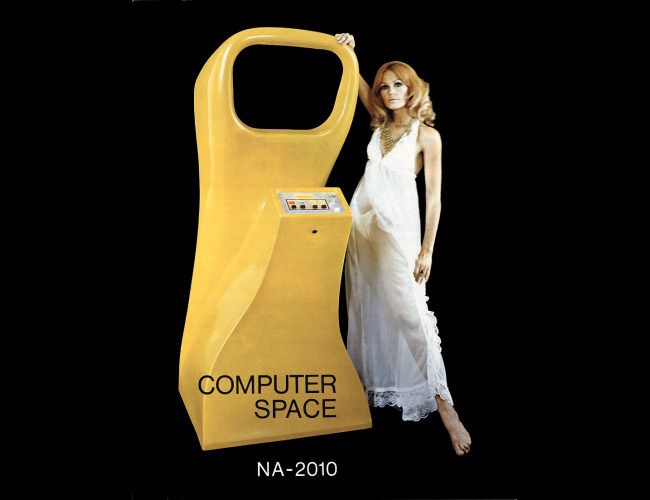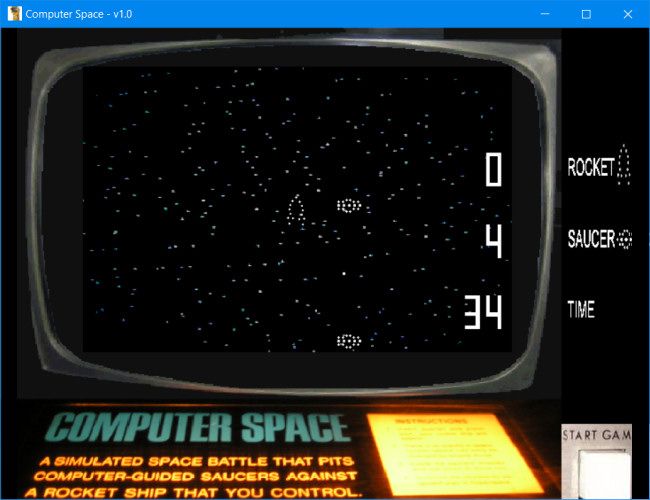Quick Links
Fifty years ago---on October 15, 1971---Nutting Associates debuted the first-ever commercial video game for sale: Computer Space, a coin-operated arcade machine. Unlike arcade games before it, it utilized a TV set for a display---and it launched the video game industry. Here's what it was like.
Computer Space---But No Computer Involved
In Computer Space, you play as a rocket ship flying around a starfield while hunting flying saucers. If you're familiar with Asteroids, it's similar, but without any space rocks.
Despite having the name "Computer Space," no computer is actually involved in the circuitry of the game. Instead, Computer Space uses TTL logic chips to control gameplay. Instead of a software program running on a computer, the game exists entirely as a hardware implementation of moving spots around on a TV screen (in the form of a finite state machine), which is almost mind-boggling to consider in our software-dominated era.
Two men, Nolan Bushnell and Ted Dabney, created Computer Space and licensed the design to amusements manufacturer Nutting Associates of California. In creating Computer Space, Bushnell took primary inspiration from Space War!, a pioneering action computer game that ran on expensive mainframe computers in the 1960s. He wanted to make an arcade version of Space War!, but computers proved too expensive to use in 1970.
On October 15, 1971, Computer Space made its public debut at the Music Operators of America show in Chicago. The game shipped in a striking fiberglass body in several colors, usually with a sparkle finish. The following year, Bushnell and Dabney went on to found Atari and sell the smash-hit arcade title Pong. Computer Space wasn't nearly as successful as Pong, but it sold an estimated 500 to 1,000 units, which was on par with a moderately successful electromechanical arcade game at the time.
Computer Space looked futuristic enough that it made a prominent appearance as a set piece in the 1973 sci-fi film Soylent Green with Charlton Heston, set in the year 2022. At one point, one of the film's actors even plays the game on screen.
Gameplay: Shoot the UFOs
In Computer Space's precursor, Space War!, two human-controlled spaceships face off in a one-on-one space duel. Due to technical restrictions, Bushnell's version of the game became one-player only: It's your rocket ship vs two machine-controlled flying saucers that move around the screen and fire missiles toward the player. There's also no gravity well in the center of the screen, which tends to make the gameplay more static and less exciting.
Upon first seeing Computer Space, you'll immediately notice that it's a monochrome game (played on a black and white TV set embedded in the arcade cabinet) and that the graphics for the ship, the flying saucers, and the starfield in the background are collections of individual dots. The game manipulates the relative positions of these dots to generate the game's graphics.
While playing, the game typically counts up to 99 with an on-screen timer, and it keeps a numerical score for you and for the saucers. Every time a saucer shoots you, their score goes up by one. Every time you shoot a saucer, your score goes up by one. If you get a higher score than the saucers within the time limit, the display inverts into "hyperspace" mode and play continues. Otherwise, your game will end.
To control Computer Space, the player uses four pushbuttons. Two buttons rotate the player's ship either left or right, one button thrusts the ship forward, and a fourth button shoots a missile from the tip of the spacecraft. Like Space War! and the later arcade hit Asteroids, Computer Space simulates the momentum of your ship in a zero-G environment, so maneuvering can be tricky.
Cultural Impact
While Computer Space didn't receive wide distribution, it introduced the public to the concept of playing games on a video display for the first time. The game proved confusing to some at first, with some gamers wondering if the signal displayed on the TV set was coming from a TV broadcast station.
At the time of Computer Space's launch, Magnavox was developing the first home game console, the Odyssey, based on Ralph Baer's work at Sanders Associates in the mid-late 1960s. The Odyssey didn't launch until September 1972, and it was the world's second commercial video game product. Interestingly, Atari's first game (and the second arcade video game), Pong, took inspiration directly from the ping-pong game on the Odyssey.
As a partnership between Bushnell and Dabney, Computer Space provided the springboard to the creation of Atari, which became a highly influential cultural and business phenomenon through the 1970s and early 1980s. While Dabney and Bushnell's partnership didn't last long--dissolving around 1973---the cultural legacy of what they built lives on in a $151 billion industry today.
Play Computer Space Today
If you'd like to try playing Computer Space yourself, you can download a free simulator created by Mike O'Malley that runs on Windows PCs. Since Nutting implemented Computer Space in hardware logic circuits, it's not possible to emulate it in software like you would a later arcade game that has a program stored on ROM chips.
As a result, this Computer Space simulator is a play-alike approximation of the actual game with some inaccuracies. Also, you can play a recreation of Computer Space on the MiSTer FPGA hobbyist console project, which is potentially more accurate, but also trickier to initially set up.
Despite the simulators, to play the complete game with all of its quirks, you'll need to hunt down an actual Computer Space machine and play it in person. It's a rare and difficult machine to find, but sometimes they show up at retro arcade gaming shows around the world.
At 50 years old, video games are still a historically young medium. It will be fun to watch how they change and grow over the next 50 and beyond. Happy birthday, arcade video games---and happy birthday, video game industry!

